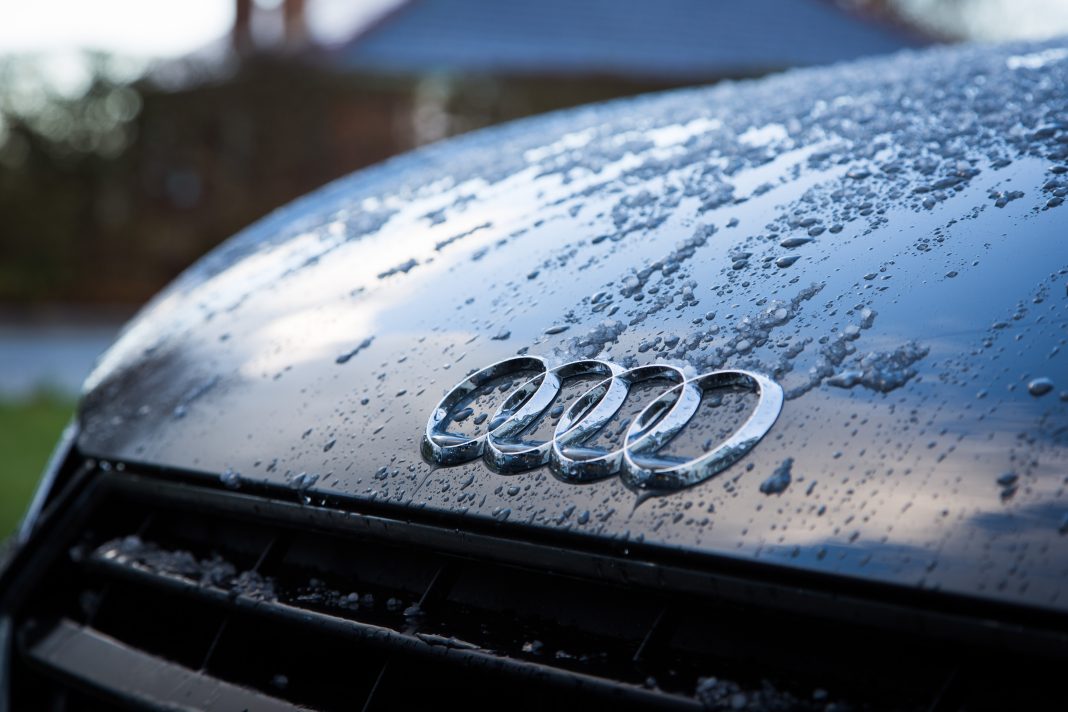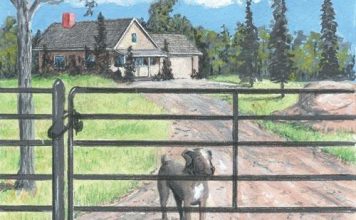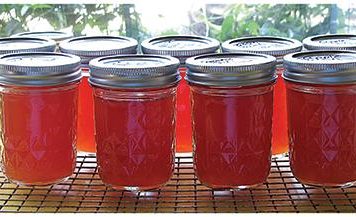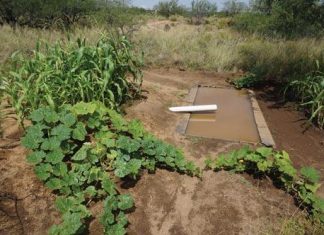 |
|
| Issue #133 • January/February, 2012 |
|
If someone told me a year ago that I would have a commercial car wash behind my garage, I would have laughed. If you live in a rural area but still commute to work each day, you most likely own a minimum of two cars. Any teenager at home adds another vehicle. Having a large yard probably means a mid-size lawn tractor. For me, I add to this mix an antique Jeep CJ-5 that I restored, a golf cart, an RV, and a pickup truck.
Washing a car is not my favorite pastime as it usually requires untangling a long hose, trying to find where I last left the bucket, sneaking some liquid soap from under the kitchen sink since I forgot again to purchase car wash soap, and finally, playing musical chairs with all the parked cars in the driveway trying to get close to the hose bib. Typically not all vehicles that need to be washed are here at the same time, which means repeating this process every few days as I rotate through the rolling stock.
When I finally realized I needed to find an easier way out of this drudgery, I thought of a pressure washer. I first tried one of those portable gasoline-powered pressure washers, but this didn’t really solve the problem as I still had to untangle and hook up a water hose, find the bucket and the soap, then realize it was out of gas again.
|
I then tried one of those portable electric pressure washers, but found these to be very low-powered and still required the hassle of dealing with the hose, bucket, soap, and now an extension cord. At this point I was determined to find a permanent solution and realized what I needed was one of those commercial car wash systems where you put in a handful of quarters, turn the switch to “soap” or “rinse,” and have at it. I quickly found out this was not as easy as I thought.
First, I could not find a commercial car wash system sold as a “kit,” and after an exhaustive search on the Internet I realized I would need to order all the parts separately from different suppliers. Unfortunately, I really didn’t know what parts I would need, as I still was not sure how these things actually worked. For example, how do they get the soap to come out by turning an electric switch, and which type of nozzle should I buy that won’t peel the paint off the family sedan. And how about the water how do you connect a pressure pump to your plumbing, and what kind of pump works best?
Fortunately, one day I was driving by a commercial car wash that was being repaired and the equipment room door was open so I turned around, parked, and peeked inside. This turned out to be exactly what I needed to see, as this was one of those very basic hand-wand systems without the automatic brushes, moving arms, or ten-cycle computerized controls. I saw the main components and a very simple plumbing arrangement. Mounted on the wall was a two-horsepower electric motor-driven 1500 PSI pump with the same type of fittings as a water hose. Higher up the wall was a plastic chemical tank which held a mixture of concentrated soap and water. Finally, a small tube from the bottom of this tank led into a small brass block which I later found out was called the soap injector. I was able to make a note of the model and brand of pump, but figuring out the rest took much more research.
|
It turned out that the pump comes complete with a very long 50-foot pressure hose, wall mounting bracket, and a long extension cord that includes a built-in GFI device to prevent electric shock from a wet floor. However, I could not figure out how to make the soap come out when needed, or stop when I wanted to rinse, until I discovered a special nozzle and soap injector in a Grainger catalog.
I ordered these devices without really knowing how they worked, and I still had not found any piping design that explained how to connect everything together. I finally figured out that the soap injector device connects to the high pressure side of the pump, and has a piping connection for a small tube leading to the bottom of the soap tank. Since I mounted my soap tank several feet above this soap injector, the gravity flow is all you need, but after reading the directions that came with the soap injector I found out I needed to also add an inline filter screen to prevent small sand or grit from plugging up the small orifice in the soap injector. This low-cost filter was also available from Grainger.
As soon as I received my parts order I could see how this nozzle system actually worked. Unlike those automated car wash stations having multiple wash, rise, and wax cycles provided by computer-controlled valves and relays, this simple soap/rinse changeover is totally controlled by the adjustable high/low nozzle holder. When you order the pump and hose assembly you will receive several different nozzles having different spray patterns. Select the nozzle having the spray pattern you want and insert it in the high/low nozzle holder which fits on the end of the hand wand that comes with the pressure hose.
Unfortunately, I did not realize until after the initial parts orders came in that the high/low nozzle holder does not come with either the hose assembly or spray nozzles, and must be ordered separately. Without it your spray pattern and the pressure in the hose will be determined totally by which nozzle you were using, and you would not have any way to lower this pressure to draw in the soap. When you rotate the high/low nozzle holder for low-pressure, the resulting lower back pressure in the line causes the soap injector to draw the soap mixture into the stream of water coming from the pump. Why this does not back up and shoot water out of the soap tank I do not know, but it is simple and it really works.
|
When you rotate the nozzle for high pressure, the high-pressure in the line back to the soap injector causes it to block the flow of soap and after a few seconds the only thing coming out of the spray nozzle is clear water. Finally, although it was very tempting to add a coin box, I installed a very basic 0 to 15-minute timer switch made for bathroom exhaust fans which was also ordered from Grainger.
The documentation for the pump assembly said I should have a filter in the water line supplying the pump which can also be damaged by sand. I purchased one of those under-sink home water filters and selected a replacement cartridge that removes sediment and grit, which can be found at any builders supply. Since the pump is supplied with a water hose type fitting, the water connection to the wall hydrant can be done with standard garden hose. I wanted the pump to start as soon as I turned on the timer, and decided to use very high-quality braided water hose so I could leave the faucet turned on all the time.
Since the pump will not let the water pass through when not running, this means you can pull your car up to the side of the garage, remove the pressure wand, turn the timer switch, and start the suds without manually opening or closing any valves simple! I mounted everything on the interior and exterior side of the same wall of my garage, and added a gravel parking area just outside to provide good drainage and prevent a big mud puddle. I found it’s best to use the higher quality soap specifically made for washing cars, as you will get fewer water spots and better results. I add fewer gallons of this concentrated soap to the 50-gallon tank of water, which lasts me the entire spring, summer, and fall.
I purchased two heavy-duty barn door hinges, and two 2x2x¼-inch aluminum angles that were 10 feet long which I used to make a swinging arm to support the hose. I strongly recommend having this arm as it keeps the pressure hose clean and off the ground, and keeps it from getting hung up on bumpers and tires as you move around the vehicle. Attaching a three-foot long section of 3-inch PVC pipe to the side of the garage makes a perfect holder for the pressure wand and completes the installation.
|
I found a quality car wash brush at Pep Boys Auto Supply which has a long extension handle and a soft brush that will not scratch the paint. If the vehicle is unusually dirty, I will set the timer for only a few minutes and use the lower pressure soap setting on the nozzle holder which will loosen the heavy dirt while spraying suds on all surfaces. I then use the hand brush on the soapy surfaces that are hard to clean before restarting the final wash and rinse process.
When the leaves start to fall it’s time for the last car wash of the year, and draining all the hoses and pump to prevent freeze damage. By then there is usually very little soap left in the tank to discard. I no longer mind washing our vehicles and never need a pocket full of quarters.
Although the pump and pressure hose package costs $1,000, the rest of the parts cost only a few dollars each and the entire project took only one weekend to build.
A list of parts and supplies is included in this article. I would suggest however, that if you have teenagers, and their friends also have cars, you might reconsider making that a coin-operated timer!
Materials:
Model WM/EE3015G 1500 PSI pressure washer pump with hose, wand, and soap injector: www.pressurewasherdirect.com; 800-654-6879
Hi/Low spray nozzle holder #IMDJ2: www.grainger.com; 800-323-0620
Inline 3/8-inch port filter screen #4YD31: www.grainger.com
Hose sediment filter #89376: www.lowes.com; 800-445-6937



 Completed car wash in operation
Completed car wash in operation 1500 PSI pump, soap injector, and in-line soap filter
1500 PSI pump, soap injector, and in-line soap filter
 Left, elevated 50-gallon PVC tank for soap/water mixture.
Left, elevated 50-gallon PVC tank for soap/water mixture. Right, exterior timer and wand storage.
Right, exterior timer and wand storage.











Hi Jeffrey! Such an amazing article you have shared upon us! Though, what are the car cleaning products you’ll recommend as an alternative? Thank you!
Thank you for this article. I appreciate your wisdom. Judy Duhon, M.Ed.